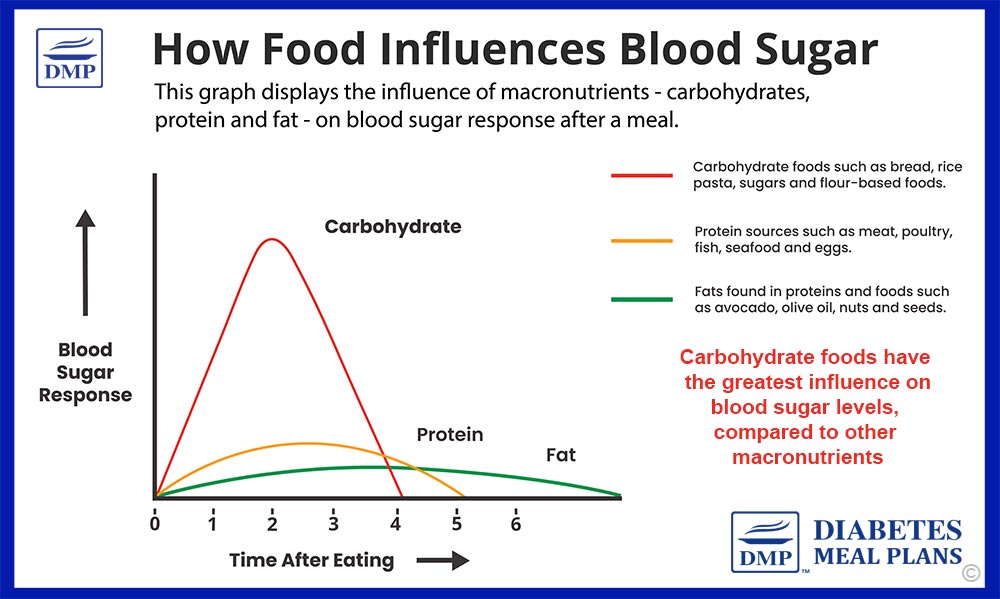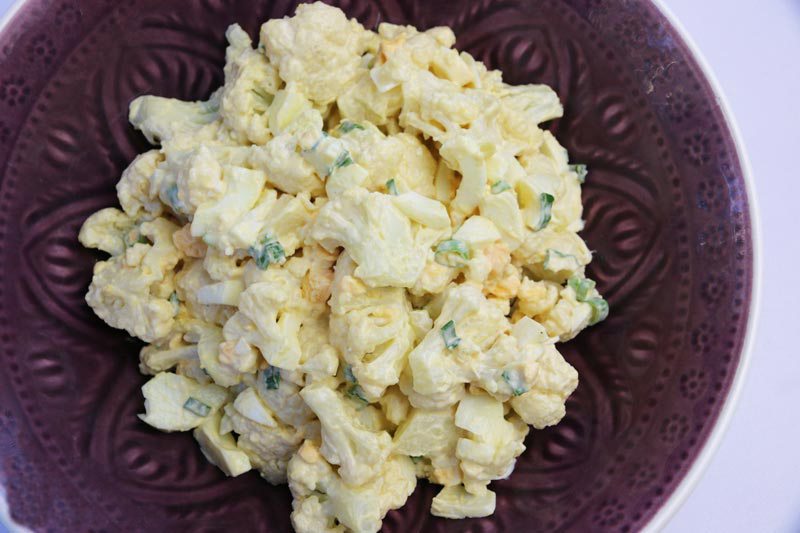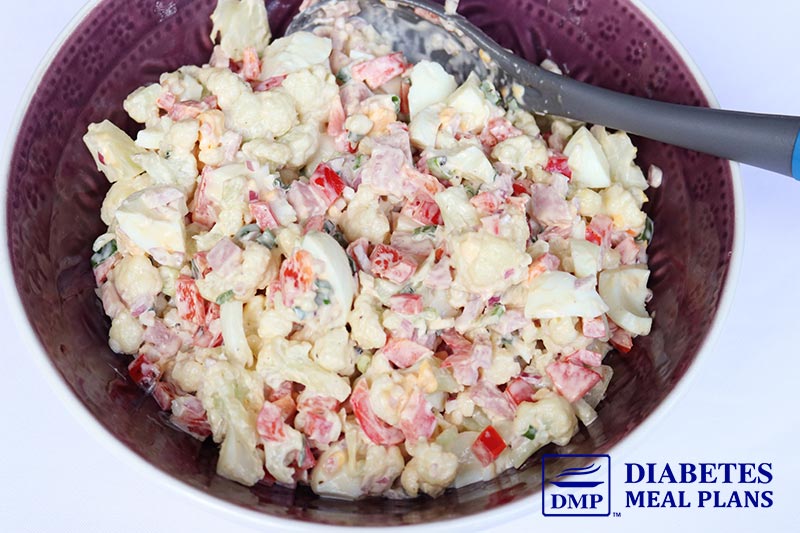Table of Contents[Hide][Show]
With type 2 diabetes or prediabetes, navigating your food choices can sometimes feel like walking through a maze.
When it comes to enjoying traditional dishes like potato salad, you might wonder if it’s safe to indulge.
Potatoes, a staple in this beloved dish, often raise questions due to their carbohydrate content and impact on blood sugar levels.
Let’s dive into the specifics of potatoes and explore how you can enjoy (a revised) potato salad without compromising your health goals.
Nutrition Facts for Potatoes
The primary macronutrient in potatoes is carbohydrates.
A medium-sized potato contains approximately 33 to 37 grams of carbohydrates and only 3 grams of fiber.
This amount of carbohydrate is more than we recommend eating in one whole meal. Carbs per meal are best kept under 25 grams.
Why? Carbohydrates have a direct influence on blood sugar levels.

For most people with type 2 diabetes or prediabetes, eating potatoes will lead to blood sugar spikes, along with spiking insulin, and that’s not what you want.
Nutrition Facts for Potato Salad
No matter which type of potato salad you choose, you’re looking at a lot of carbs.
For one cup of potato salad, you’ll be looking at 44 to 54 grams of carbohydrates — that’s a lot!
Take a look at the table below with comparisons between homemade and store-bought options.
| Potato salad, 1 cup | Carbs (g) | Fiber (g) | Sugars (g) |
|---|---|---|---|
| Homemade Potato Salad | 54 | 5 | 7 |
| Walmart Deli Original Potato Salad | 54 | 6 | 7 |
| Reser’s Original Potato Salad | 54 | 6 | 7 |
| Southern Home Potato Salad | 52 | 2 | 20 |
| Trader Joes Old Fashioned Potato Salad | 44 | 4 | 2 |
| Kroger Old Fashioned Potato Salad | 44 | 6 | 6 |
As you can see, there isn’t much difference because they all contain potato as their main ingredient, and potatoes are a high carb food.
If you do choose to eat traditional potato salad, you’ll want to be keeping portions small. For example, a quarter cup serve will be around 13.5 grams carbs.
Understanding the Glycemic Index of Potatoes
The glycemic index (GI) is a tool that measures how much certain foods increase blood sugar levels.
Potatoes, depending on their type and preparation method, typically have a high GI (between 60 and 95), meaning they can lead to quicker and higher spikes in blood sugar.
This attribute makes them less suitable for a diabetes diet.
Advantages of Potato Salad
The way potatoes are prepared and the portion you consume significantly affect their impact on your blood sugar.
Eating a potato salad is a much better way to consume potatoes, as opposed to eating mashed, or even plain boiled potatoes. The difference is potato salad is cold—so here’s why that matters.
Boiling potatoes and then cooling them in the fridge overnight:
- Decreases their glycemic index so they won’t spike your blood sugar levels as high.
- Increases their resistant starch, a type of fiber that escapes digestion and feeds your good gut bacteria.
Keep in mind that doesn’t take away the overall carbohydrate content of a potato, but at least eating potatoes in a potato salad (cooked and cooled) will slightly reduce the blood sugar impact.
It’s also very important to be mindful of portions. IF you are going to eat potato salad, a small serving can help mitigate the blood sugar rise.

Alternatives for a Diabetes-Friendly Potato Salad
You might still crave the comfort of potato salad, and fortunately, there are ways to satisfy this craving.
For instance, you could substitute some or all of the ingredients in a traditional potato salad for other ingredients that are blood sugar friendly.
Cauliflower makes the perfect potato substitute and we love using it in ‘potato’ salad.
Cauliflower Potato Salad

Instead of potato, use steamed cauliflower. Blend with scallions (spring onions), hard boiled eggs, generous amounts of mayonnaise and a little mustard.
A generous half pound portion is around 14 grams carbs and very low glycemic index, cauliflowers having a GI of 15—potatoes are 60 to 95!
Additional Ingredients
Incorporating non-starchy vegetables like celery, cucumbers, and leafy greens can also enhance the fiber content of the salad, aiding in slower and more stable blood sugar responses.
Adding crispy bacon or diced ham can further enhance flavor and satisfaction.
Traditional potato salad ingredients like mayonnaise and mustard contribute flavor without significantly affecting the dish’s glycemic load—and you can still add these ingredients to your cauliflower ‘potato’ salad generously.
Loaded Cauliflower Potato Salad

To further load up you salad, use steamed cauliflower, diced red onion, boiled eggs—mashed, red bell pepper, ham, scallions (spring onions), mayonnaise and mustard for a flavorful salad alternative.
If you served either of the above ‘potato’ salads to your family or guests, they won’t know the difference. Or, if they do, they’ll love it just as much.
You could also mix potato into the salad, try half/half, which will certainly reduce the carbohydrate impact, but still give you a delicious potato salad indulgence.
Embracing Blood Sugar Friendly Potato Salad
Although traditional potato salad may pose challenges for blood sugar management, understanding the impact of foods can open the door to occasional indulgences or for choosing alternatives that are better for blood sugar control.
By focusing on balance, moderation, and creative culinary alternatives, you can enjoy versions of potato salad that fit within a diabetes friendly nutrition framework.

Leave a Reply